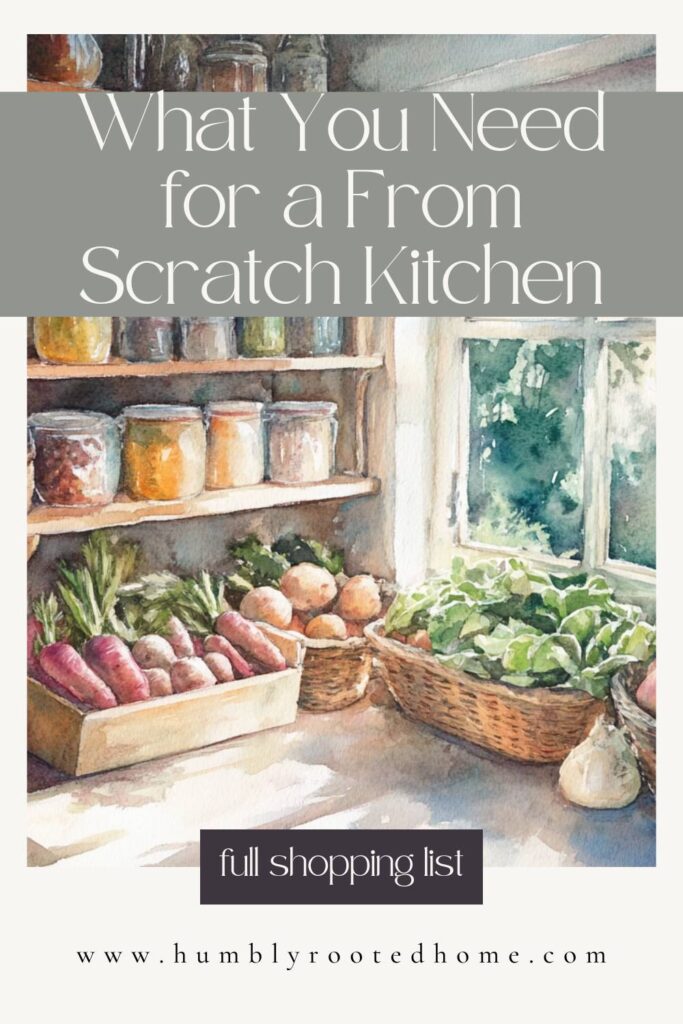Everything You Need to Cook from Scratch
Are you wanting to create a from scratch kitchen but unsure what ingredients you need? This post details the basic ingredients every kitchen needs in order to create homemade meals.
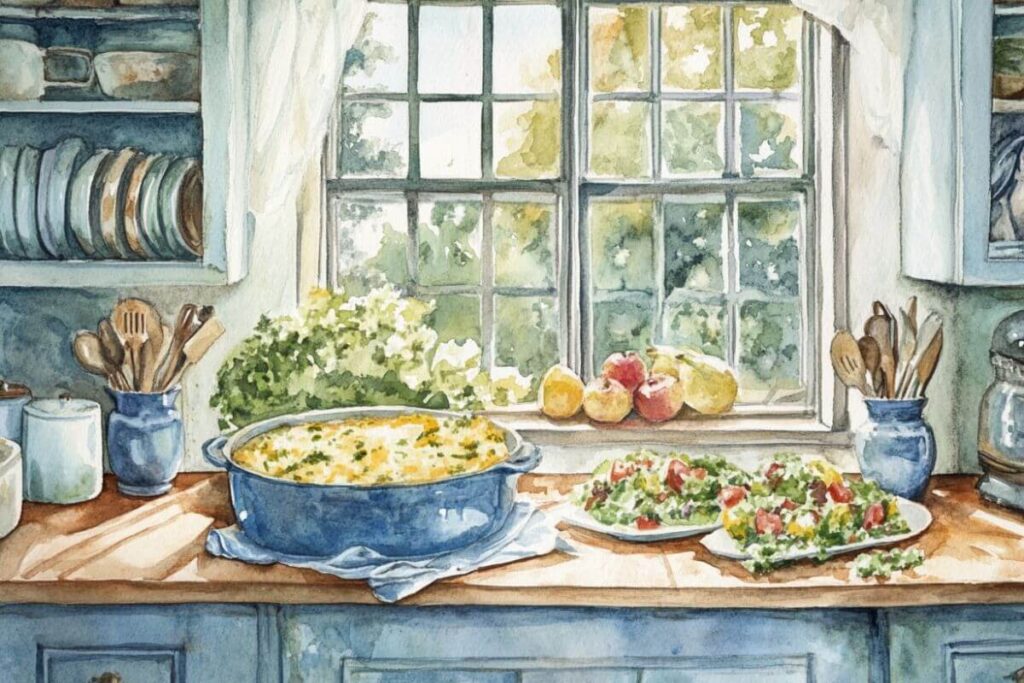
In my opinion, there is nothing like a good, from scratch meal. But it does come with a bit of a learning curve, especially if you weren’t raised in a home where scratch made meals were a thing.
Personally, learning to cook meals with whole ingredients was something that I didn’t learn until my adult years. And it has been a process, to say the least.
But along the way, I’ve realized there are some ingredients that I continually need to keep on hand in order to keep my kitchen running smoothly.
I’ve previously made a post talking about the pantry staples you need to stock, but this post will go into things beyond dry goods.
Affiliate disclosure: This post may contain affiliate links. As an Amazon Associate this means I will earn a small commission if you choose to purchase through my links. This is at no extra cost to you! Read full disclosure here.
What is a From Scratch Kitchen
A from scratch kitchen, at least in the way I define it, is a kitchen that uses whole food ingredients to create meals. These are single food ingredients – things like flour, sugar, spices, etc.
It does not include processed foods – like canned cream soups, boxed mixes, and things like that. Although you can make a homecooked meal using processed ingredients, for the sake of this post, we are talking about the single ingredient items in order to cook from scratch.
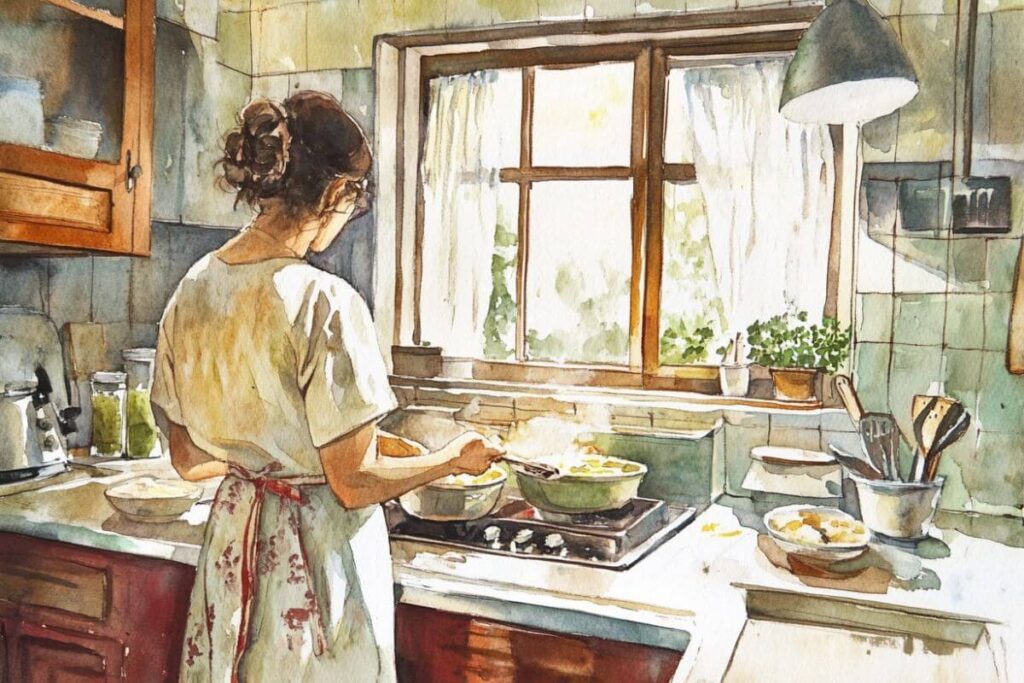
Why Does Cooking from Scratch Matter
The benefits of from scratch are many, but here are the top reasons.
Health Benefits – I’m willing to bet that if you’ve landed on this post that you have been considering the effects that your diet has on your health. The more meals we can make using simple, whole food ingredients, the better for our health.
Cost – Cooking from scratch can also save you money on your grocery bill, especially if you are able to buy in bulk. While it may seem like it’s costing you more up front to buy all the ingredients to make something from scratch, those ingredients actually end up going further than the single box processed item.
Taste – From scratch meals just taste better. Sure, it can take a little while for your taste buds to adjust if you’ve been eating a high processed diet. But after eating from scratch meals for a while, you won’t get the same enjoyment out of those processed ingredients you once did. You’ll start to crave the fresh ingredients with their natural flavors.
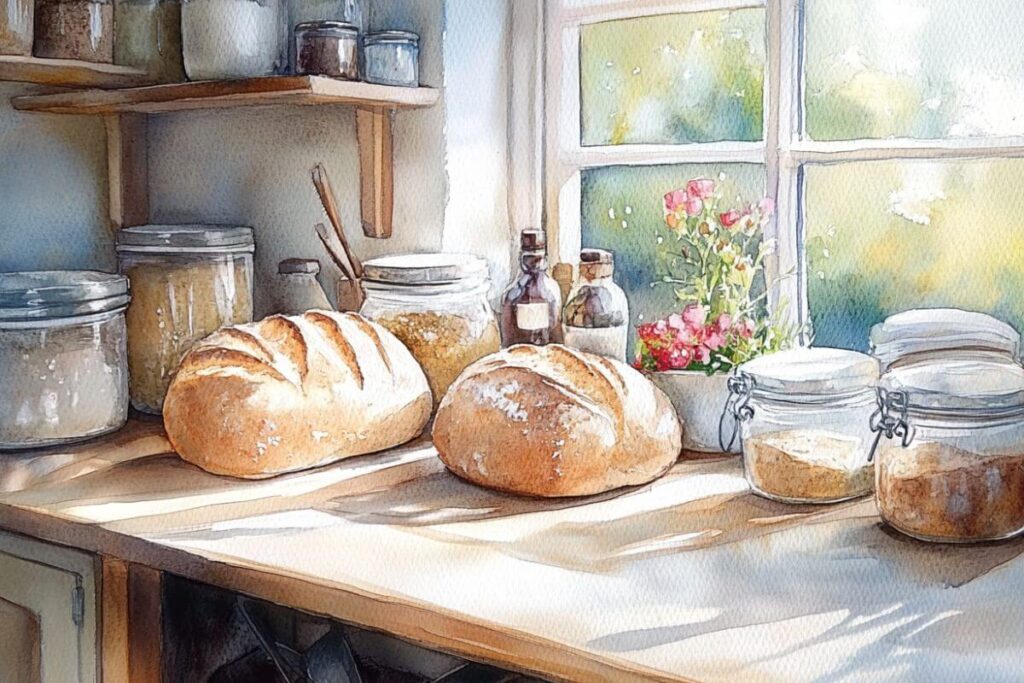
Storing Ingredients for From Scratch Cooking
Before buying a bunch of ingredients in large quantities (here’s my guide to what I order in bulk), you want to make sure you have good food storage systems. Here are some of my favorite food storage containers.
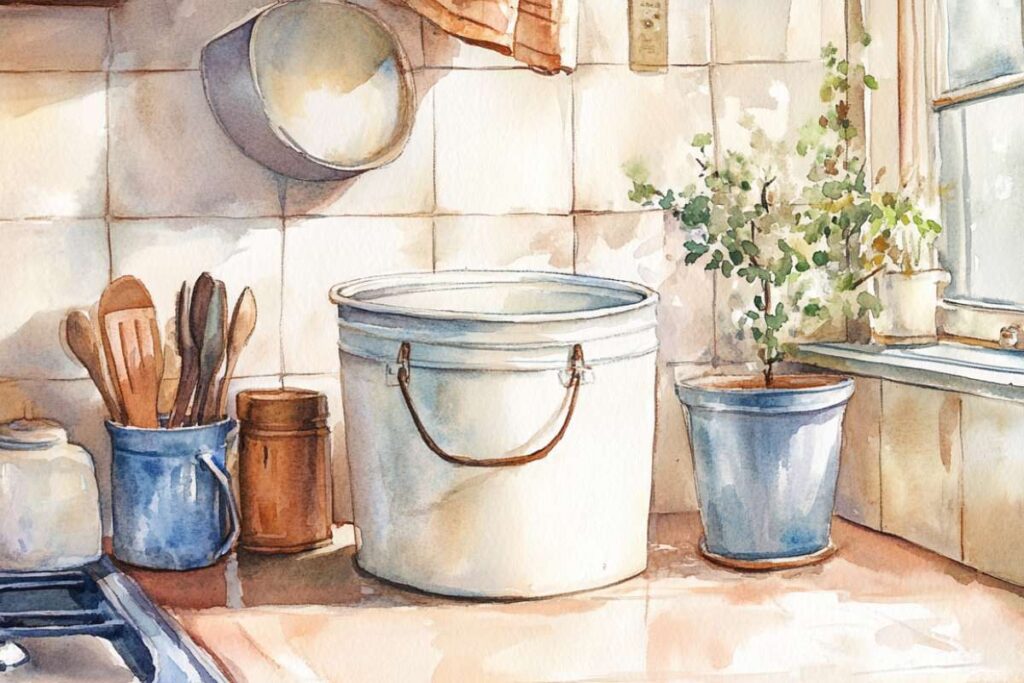
- Glass Food Jars with Airtight Lids – I use these jars in my kitchen cabinets to store sugar, rice, and dry beans in smaller quantities right in my kitchen.
- Five Gallon Food Safe Buckets – These big buckets with airtight lids are perfect for storing pantry goods in large quantities.
- Deep Freezer – A chest freezer, or a separate standing freezer, is also wonderful to have in order to store extra protein and other freezer safe ingredients that you use frequently. You can often find these used or on special sales to help save money.
What You Need to Cook from Scratch
Flour
Flour, whether you are buying bags of all-purpose from the local grocery store or you’re buying whole wheat berries to grind at home, is a necessity. It is generally used at the base for all baked goods, so all your bread, muffins, and pie crusts. But you can also use it to make gravies, rouxs, and batter.
Sugar
Sugar is a key ingredient for baking and sweetening dishes. It’s essential for balancing flavors in savory recipes, caramelizing, and preserving. Keep sugar stocked to create desserts, sauces, and dressings from scratch effortlessly.
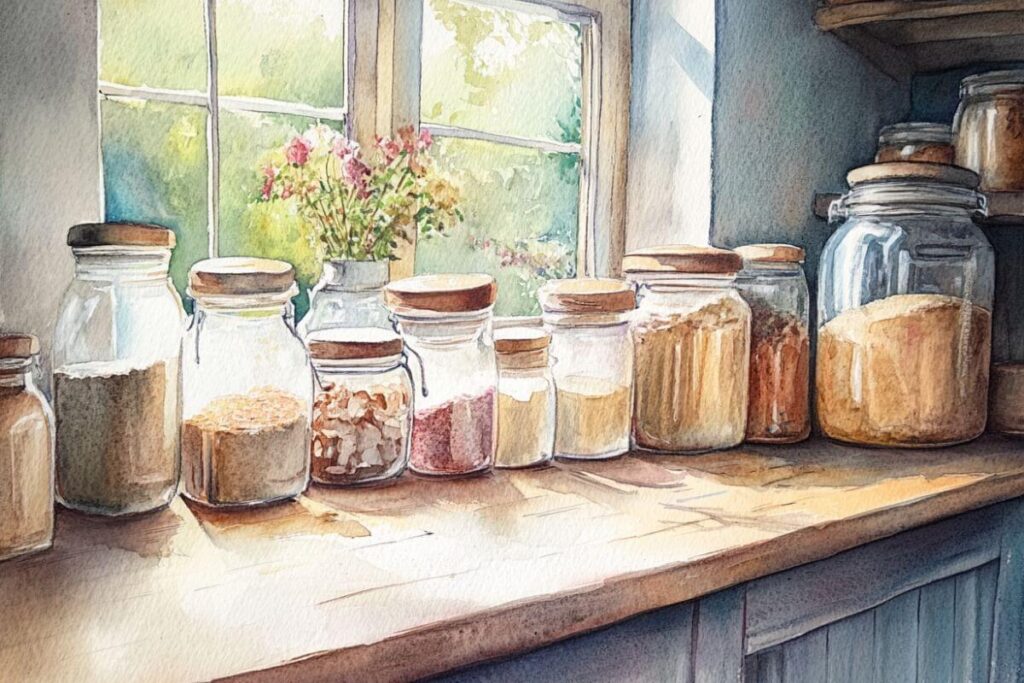
Baking Powder and Soda
Baking powder and baking soda are leavening agents critical for making baked goods rise. They ensure fluffy pancakes, cookies, and cakes. Without them, your baked creations won’t achieve the desired texture or consistency.
Salt & Pepper
Salt and pepper are the foundation of flavor in cooking. Salt enhances and balances flavors, while pepper adds a subtle kick to dishes. They’re indispensable for seasoning soups, meats, and vegetables. Try to order a high-quality salt to be sure you’re getting all the natural minerals.
Butter
Butter adds richness, flavor, and moisture to recipes. It’s vital for baking, sautéing, and creating sauces. From flaky pie crusts to creamy mashed potatoes, butter is a versatile staple. It also freezes well, so if you find a good price, be sure to stock up!
Milk
Milk is a base ingredient in countless recipes, from creamy sauces and soups to baked goods. It’s essential for creating smooth textures and providing richness to dishes like mashed potatoes and pancakes, or for making your own yogurt.
Eggs
Eggs are such a versatile protein source. You can use them for breakfast, lunch, dinner, or even as a snack. Most baking recipes also call for eggs, so keeping a healthy supply of them is important. If you’re able to, source farm fresh eggs for excellent flavor.
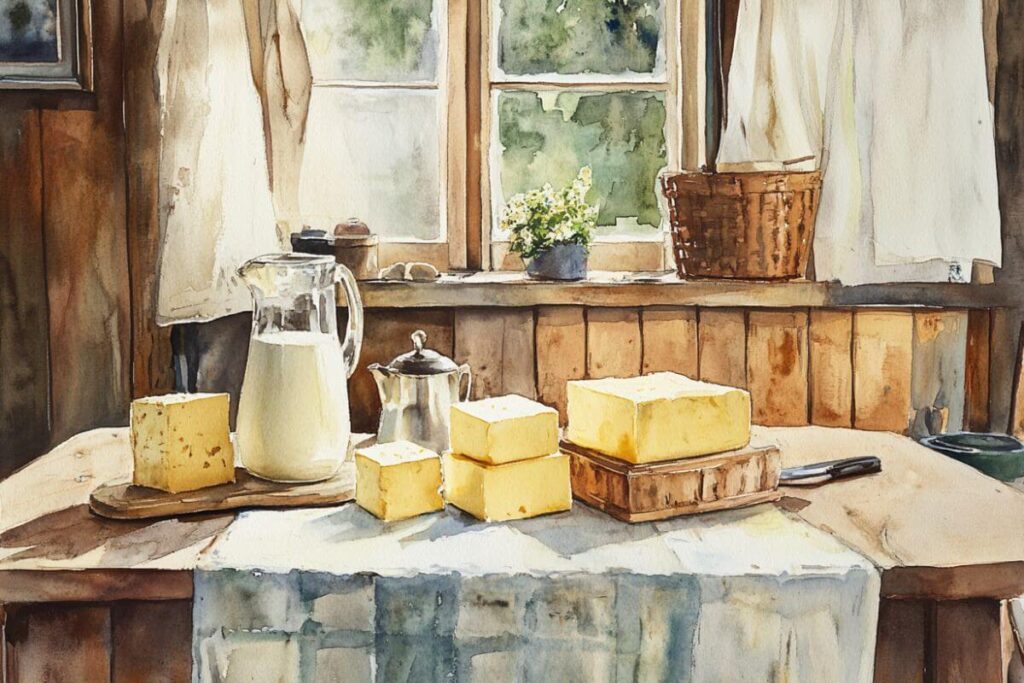
Cheese
Cheese is a versatile ingredient that adds flavor, creaminess, and protein. Use it for topping casseroles, making sauces, or enhancing dishes like pizza and pasta. Stocking cheese ensures you can elevate simple recipes. Buying block cheese to shred yourself adds extra flavor to dishes that you just don’t get with pre-shredded cheese.
Cottage cheese is also a great source of protein and can easily be added to scrambled eggs.
Heavy Cream or Half and Half
Another versatile ingredient that can be used to add richness to sauces, soups, and desserts. You can also replace your store-bought coffee creamer with homemade coffee creamers by simply having heavy cream or half and half on hand.
Sour Cream
I always keep sour cream on hand. It brings tanginess and creaminess to recipes. Use it in baked goods, dips, or as a topping for chili and tacos. Its versatility makes it a must-have for many homemade dishes.
Oil
Cooking oil is essential for frying, sautéing, and baking. You can also use it to make things like homemade mayo and salad dressings. Avocado, olive and coconut oil are always on my pantry shelf.
Carrots
Carrots are a versatile vegetable that can be added to soups and stews, or roasted and eaten on their own. Their long storage life makes them a staple produce item in my kitchen.

Potatoes
Fried, steamed, boiled, baked – there are so many uses for potatoes! Which is why I always keep potatoes on hand. Use them as a side or make them the star of your favorite dish. Filling and delicious makes potatoes a top priority food item in our home.
Celery/Onion/Garlic/Bell Pepper
Keep a steady supply of fresh celery, onion, garlic and bell pepper on hand to add flavor and nutrients to your from scratch dishes. If you’re worried about them spoiling, you can always chop and freeze them in freezer safe containers.
Maple Syrup & Honey
Maple syrup is a natural sweetener that’s great for pancakes, marinades, and baked goods. It adds depth and a unique flavor to dishes, making it a versatile pantry item.
Honey is another natural sweetener that’s perfect for dressings, marinades, and desserts. It also has antibacterial properties and is great for soothing sore throats.
Beans
Beans are an excellent source of protein and fiber. Keep them on hand for soups, chili, salads, and vegetarian dishes. They’re versatile, filling, and budget-friendly. Stock canned or dry beans (you could can these yourself) long term.
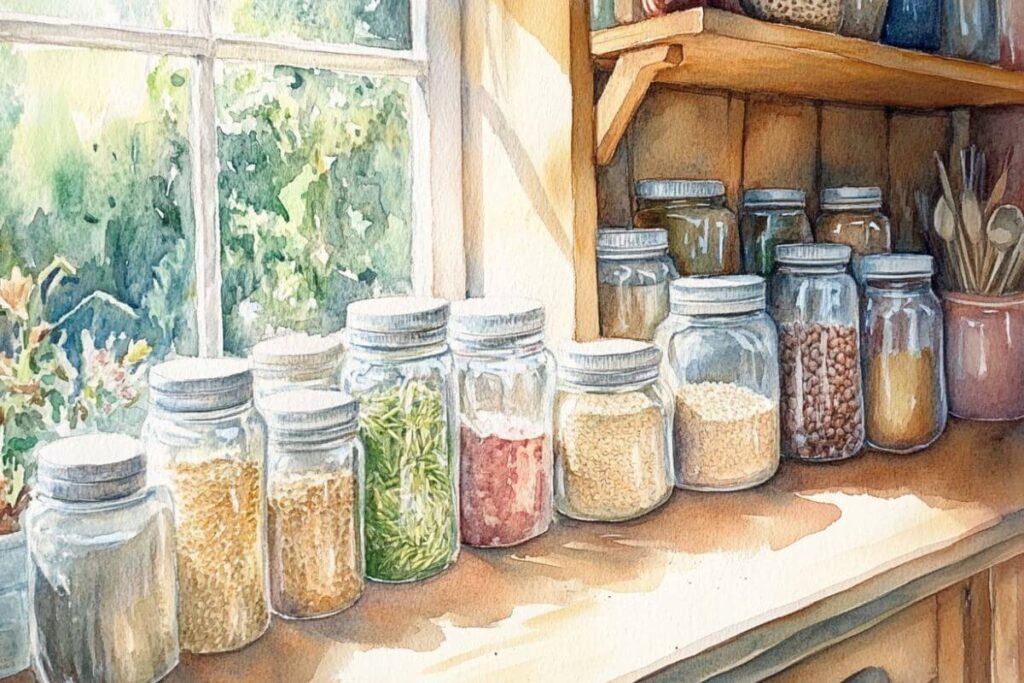
Oats
If you want to make snacks from scratch, oats are an excellent ingredient to keep on hand. Add them to baked goods, make a big pot of oatmeal with fruit or a pan of homemade granola.
Rice
Rice is another staple item in my kitchen. It can be added to soups, served with protein and vegetables, or used for many one-pot dishes.
Protein
Keep a good supply of different proteins available. If you’re limited on freezer space, consider canning different meats in order to keep them shelf stable. Home canned chicken makes excellent chicken salad or you can add it to soup. Beef and pork can also be canned for an easy meal.
*Tip* Consider keeping your bones and veggie scraps to turn into bone broth.
Assorted Fruits/Veggies
Rather canned or frozen, having fruits and vegetables on hand to complete a meal is a must. Frozen fruits can be added to smoothies, yogurt, and oatmeal. Frozen or home canned vegetables can be added to a protein source for a quick weeknight meal – all from scratch.
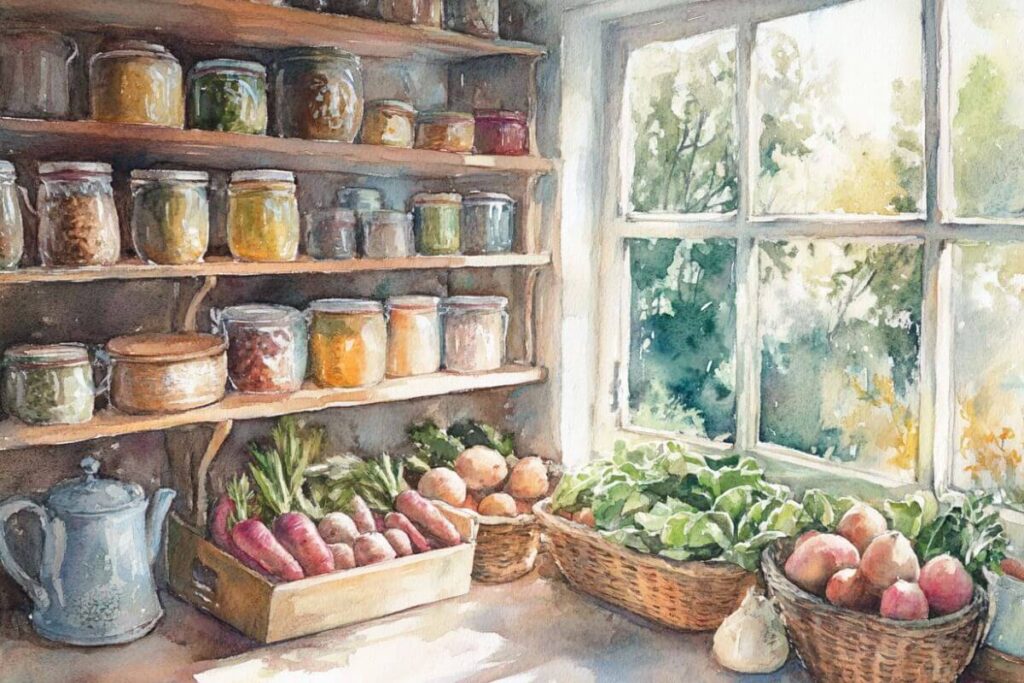
Tomato Products
Canned tomatoes, paste, and sauce are pantry essentials. They’re the base for soups, stews, pasta sauces, and casseroles. Stocking these ensures you can whip up flavorful dishes anytime.
Broths
Chicken, beef, or vegetable broths are essential for making soups, stews, and sauces. They add depth to dishes and can also be used for cooking grains or deglazing pans.
Save this for later!
